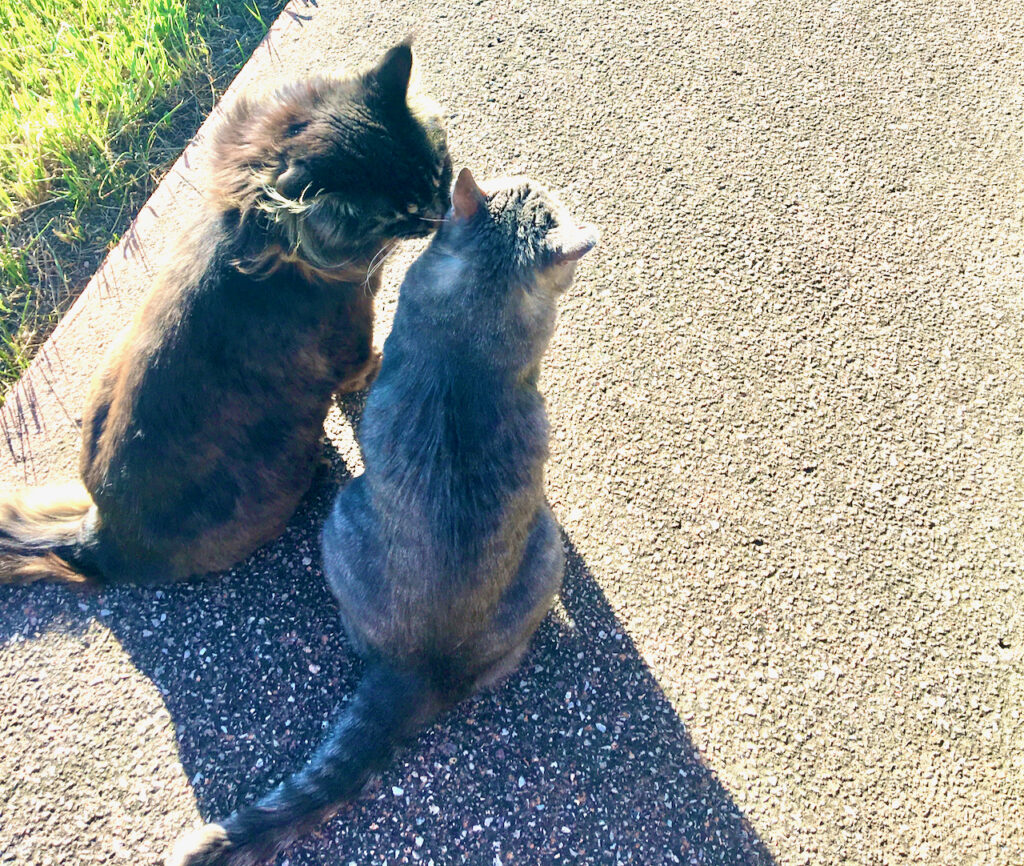 10,000 years ago, the ancestors of our domestic cats decided to take advantage of the abundance of prey near and in human settlements. During this time, the social lives of cats changed from solitary hunters to members of structured, stable groups called colonies. Today’s free-ranging cats, particularly those that live in urban environments, depend on food provided by people, in addition to hunting rodents and raiding human garbage cans.
10,000 years ago, the ancestors of our domestic cats decided to take advantage of the abundance of prey near and in human settlements. During this time, the social lives of cats changed from solitary hunters to members of structured, stable groups called colonies. Today’s free-ranging cats, particularly those that live in urban environments, depend on food provided by people, in addition to hunting rodents and raiding human garbage cans.
Social lives of cats: family toms
In urban settings, food is more plentiful and colonies of cats organize themselves near feeding sites. Members of these colonies are friendly with other members but will defend their territory against intruders from other colonies. (References 1, 2)
Male domestic cats have two mating strategies:(Reference 3)
- Solitary toms with large home ranges will mate with females from colonies in their home range. These are typically larger cats and they do not form social bonds with the females in the colonies. This is more typical of rural areas where resources are more spread out.
- In urban settings, males, unrelated to the females, often affiliate themselves with a colony. These “family toms” enjoy the greatest mating success within their particular colony, even if they are small. (References 2,3)
The “family toms” have been known to participate in the care and rearing of the kittens, sharing food with kittens and sometimes disrupting play of juveniles that is getting out of hand with an experienced adult paw. They also band together with the female cats to drive off marauding tomcats that threaten the kittens. (References 1, 2, 3) Killing of kittens by tomcats is rare in the urban cat colonies (Reference 2).
In contrast, infanticide accounts for 25% of the deaths of lion cubs. When the resident males in the lion pride are displaced by a new “coalition” (group of males associated with a pride), incoming coalition kills the young cubs in the pride, so that the females go into estrus. Thus, the cubs are sired by the new incoming males. ( Reference 4).
Social lives of cats: my Family toms
I have had two cats in my life that I believe were “family toms”.
Marty
My childhood cat was a male Siamese named Marty. He was an indoor-outdoor cat that somehow did not get neutered until he was 8 years old. He participated in his share of fights with cats and other animals. We always patched him up and let him out again.
I took him with me to college and he lived with me in dorms and apartments. One apartment we lived in had a back door that opened onto an alley. I used to let Marty out during the day. There was a population of cats that frequented the alley. One day, I was walking back from classes and noticed Marty sitting peaceably with these cats.
This social experience might explain the ease with which Marty got along with the kitten one of my roommates brought home and the young cats that I acquired when Marty was about 11 years old. I did not do much of an introduction with these kitties – they seemed to get along immediately. At one point, we lived in a old farm house; the two younger cats would accompany Marty on his expeditions to the neighbor’s house.
Gus
Gus was a free-roaming cat caught in a trap by my veterinarian employer. He is still with me and his story can be read at “Bringing a Wild Cat Indoors“. He lived briefly at the vet clinic where he was always interested in kittens, jumping onto the treatment table when you were giving the kittens vaccines.
Today, Gus watches over the three other cats in my house, looking out for wildlife when we go outdoors (supervised nowadays). One incident that I won’t soon forget involved Gus and Zelda, a female cat in the household. We were walking around our townhome when a terrier dog chased Zelda. Gus took notice and ran the dog off, chasing her away. He then escorted Zelda back to our front door. This level of protectiveness makes me think that perhaps he was a “family tom” in his previous life on the streets.
In the 10,000 years cats have lived with humans, the social lives of cats has changed. Some cats still are solitary hunters but many choose to live in structured, stable social groups. They have been able to change their behavior to take advantage of their environment. The tolerance of kittens and other cats may be one reason the domestic cat has successfully spread across much of the world (with the exception of Antartica).
An additional note…
Attitudes and care of cats has changed in the past 2-3 decades. Many cats live exclusively indoors, enjoying safer and healthier lives. Older and wiser now, I keep my current group of cats primarily indoors with daily supervised outdoor time.
references
- Natoli, E.; Litchfield, C.; Pontier, D. Coexistence between Humans and ‘Misunderstood’ Domestic Cats in the Anthropocene:
Exploring Behavioural Plasticity as a Gatekeeper of Evolution. Animals 2022, 12, 1717. https://doi.org/ 10.3390/ani12131717 - Vitale, K.R. The Social Lives of Free-Ranging Cats. Animals 2022, 12, 126. https://doi.org/10.3390/ani12010126
- Crowell-Davis, S.L. (2007). Cat Behaviour: Social Organization, Communication And Development. In: Rochlitz, I. (eds) The Welfare Of Cats. Animal Welfare, vol 3. Springer, Dordrecht. https://doi.org/10.1007/978-1-4020-3227-1_1
- University of Minnesota, College of Biological Sciences, Lion Research Center, (https://cbs.umn.edu/lion-research-center/all-about-lions/social-behavior)

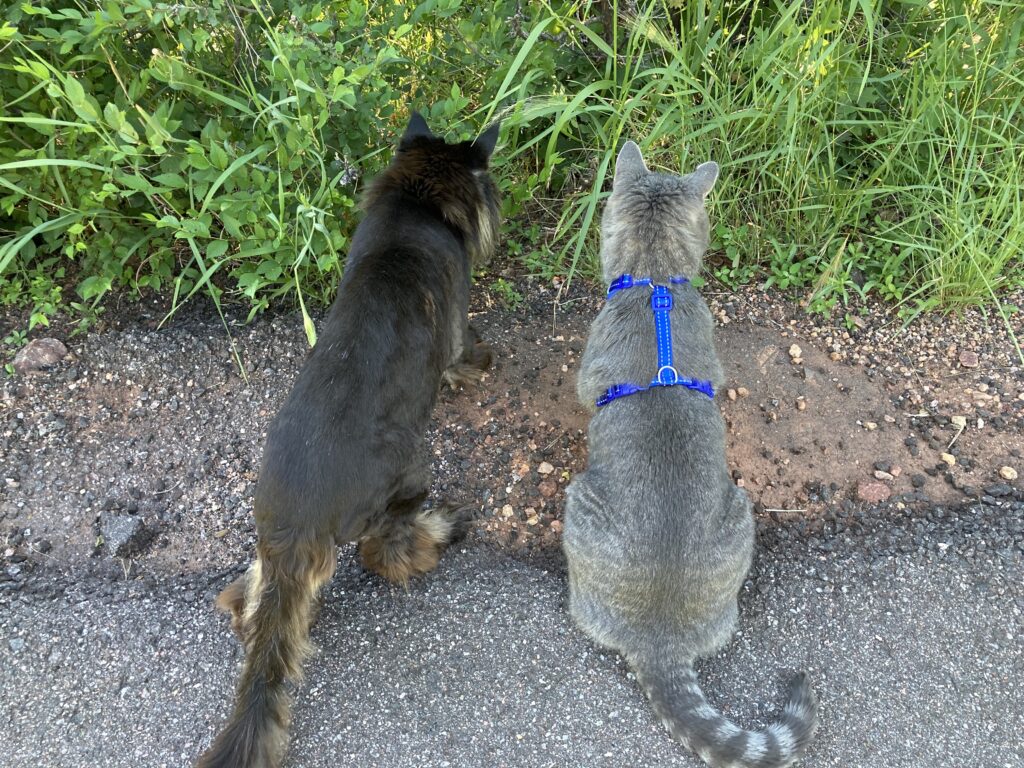
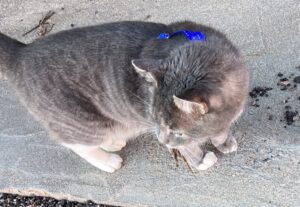
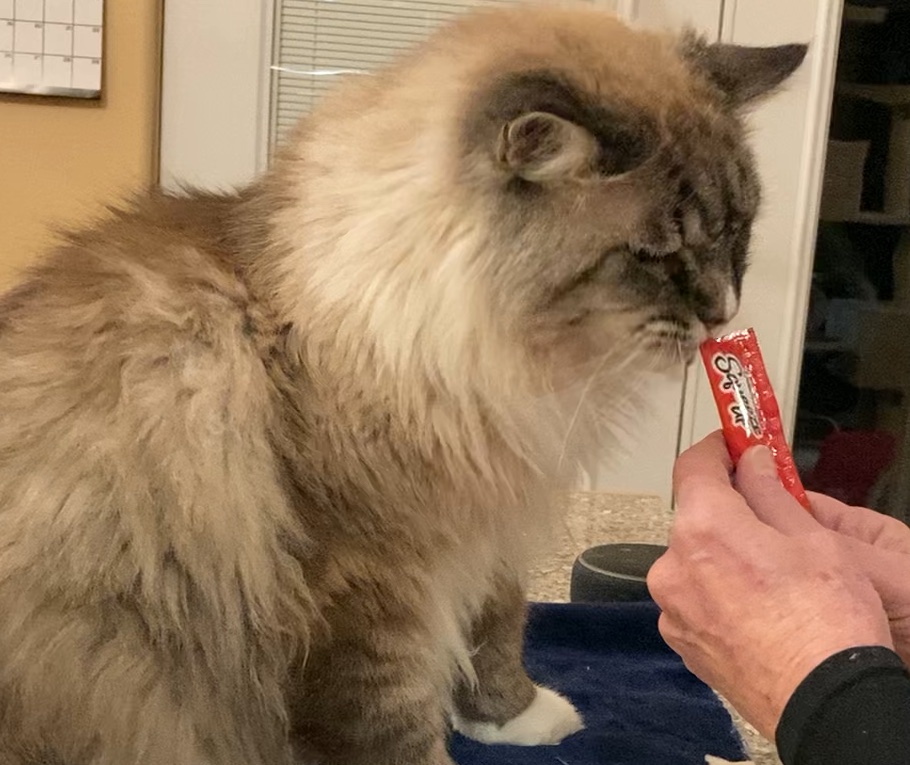 Eating is a positive experience for healthy animals. Two neurotransmitters released while eating are dopamine and serotonin. Dopamine is associated with feelings of reward and motivation; serotonin with feelings of happiness and calmness. Thus, food is one of the ways we can induce a positive emotional state in a healthy cat.
Eating is a positive experience for healthy animals. Two neurotransmitters released while eating are dopamine and serotonin. Dopamine is associated with feelings of reward and motivation; serotonin with feelings of happiness and calmness. Thus, food is one of the ways we can induce a positive emotional state in a healthy cat.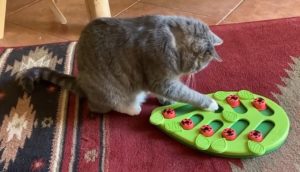 food and environmental enrichment
food and environmental enrichment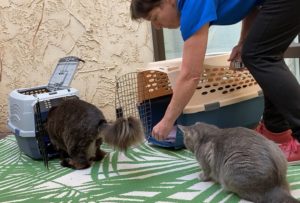 Food and your cat’s mental health: behavior modification
Food and your cat’s mental health: behavior modification